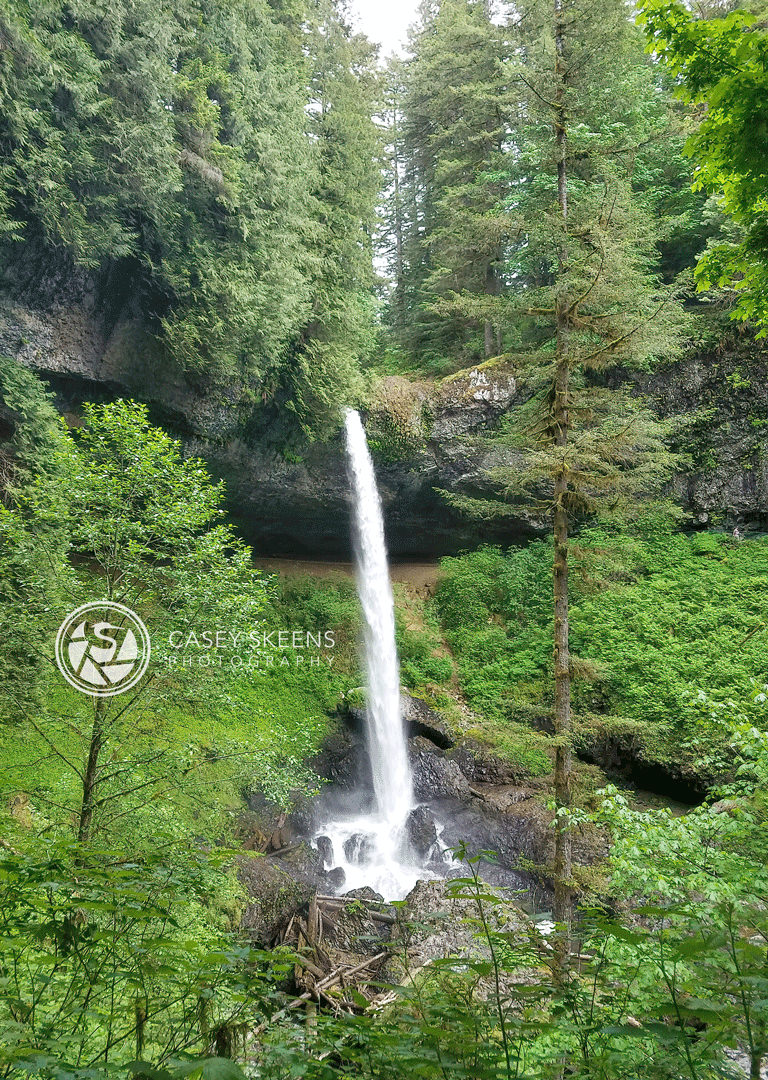
Chasing waterfalls is a challenge. Photographing them is something of an art form. Waterfall photography requires a photographer to be at their very best, as they pit themselves against the elements to get that awe-inspiring shot.
Why Waterfall Photography Is Worth It
Standing in front of a waterfall, surrounded by nature, one can easily be overwhelmed by the majesty of the moment. The power and movement of the water as it cascades down into a river pool needs to be communicated, somehow, with a still image. A good waterfall photographer can convey the feeling of being there with the click of a button (and maybe some work in post-production).
The adventure starts with discovering the waterfall – finding that perfect spot where you can work with the natural elements. You need to be agile in your movement as you carry your camera, lenses, filters, and tripod – and then strategic in your thinking as you search for an original composition.
Great waterfall photography has the effect of making the water look ethereal. Capturing that otherworldly effect where the water flows as if it were smoke can be hard to do with a long exposure in the harsh light of day. I’ve compiled a list of what has worked for me as a photographer who enjoys the challenge of waterfall photography and creating visually astounding images.
Tricks And Techniques Of Waterfall Photography
Timing is everything.
Like with any outdoor shoot, your windows are the golden hours of sunrise and sunset. A part of the challenge sometimes requires a hike to get to the waterfall. Overcast conditions work though too – and are also great to hike in.
An original point of view.
Take a few minutes to discover your own unique viewpoint – can you clamber up a nearby rock to shoot from slightly higher? Or can you get behind the waterfall, or slightly adjacent to it? What elements of the scenery are you including to contrast your waterfall with its surroundings? Even the smallest leaf, rock, or tree in the foreground can add delightful detail to your image. Try to follow the water’s movement to see if any interesting angles appear that can be accentuated by the angle you choose to shoot from.
Shoot in Landscape.
Your natural inclination upon arrival will be to capture the length of the waterfall in all its majesty – considering most waterfalls are long and thin. I prefer to shoot in landscape so that I can give the waterfall more context. It’s the natural setting that you are capturing as much as the waterfall itself, to convey the beauty of the moment.
The Right Gear And Settings For Waterfall Photography
Your camera.
A mirrorless interchangeable-lens camera or DSLR is perfect. You want to be able to set your shutter speed to several seconds. Wide and telephoto lenses are great as you don’t risk your camera getting wet by the waterfall’s spray.
Shutter Speed
Anywhere from 0.3 seconds up to several seconds is good if you’re looking to capture movement in the water. A slow shutter speed gives you that blurry, ethereal effect I’ve mentioned. Remember that this needs to be offset by something in sharp focus, such as rocks. A fast shutter speed of something like 1/2000 is what you want to use if you’re attempting to freeze every drop of the waterfall and showcase its power.
ISO
Control the amount of light your camera is letting in, by setting your ISO to 100. You’ll not only reduce the amount of digital noise in your image, but you’ll also avoid overexposing the scene as you can get then away with slower shutter speeds.
Filters
You’ve heard of Neutral Density filters. Well, this is where they come in handy if you’re wanting to retain the color of the scene without reducing too much of the light that’s being let in. A polarizing filter will bump up the color saturation of your image and has the bonus of minimizing reflections.
Tripod
Being able to stabilize your camera is an absolute imperative – and you can’t get away with balancing it on a nearby rock. A sturdy tripod is totally worth it every time. You can find tripods made out of sturdy and lightweight materials that will make them easier to bring along. Avoid cheap tripods, they are not to be trusted with your camera.
A Cable Release Button
This will minimize camera shake and is generally recommended when photographing long exposures. With that and your sturdy tripod, you can perhaps be a bit more adventurous as to where you choose to take your photograph.
I find great tranquility being close to a waterfall – and then enjoying the privilege of soaking the setting in while photographing it. There’s the thrill of getting to a new location — As a start, you can consider visiting waterfalls within an hour or two’s radius from where you live, and get creative with your camera.
Once you’ve arrived, find your vantage point, and communicate the exquisite experience of engaging with the waterfall in the photograph that you take. There’s a subtle beauty in this, which makes waterfall photography a well-crafted and unique pastime.
